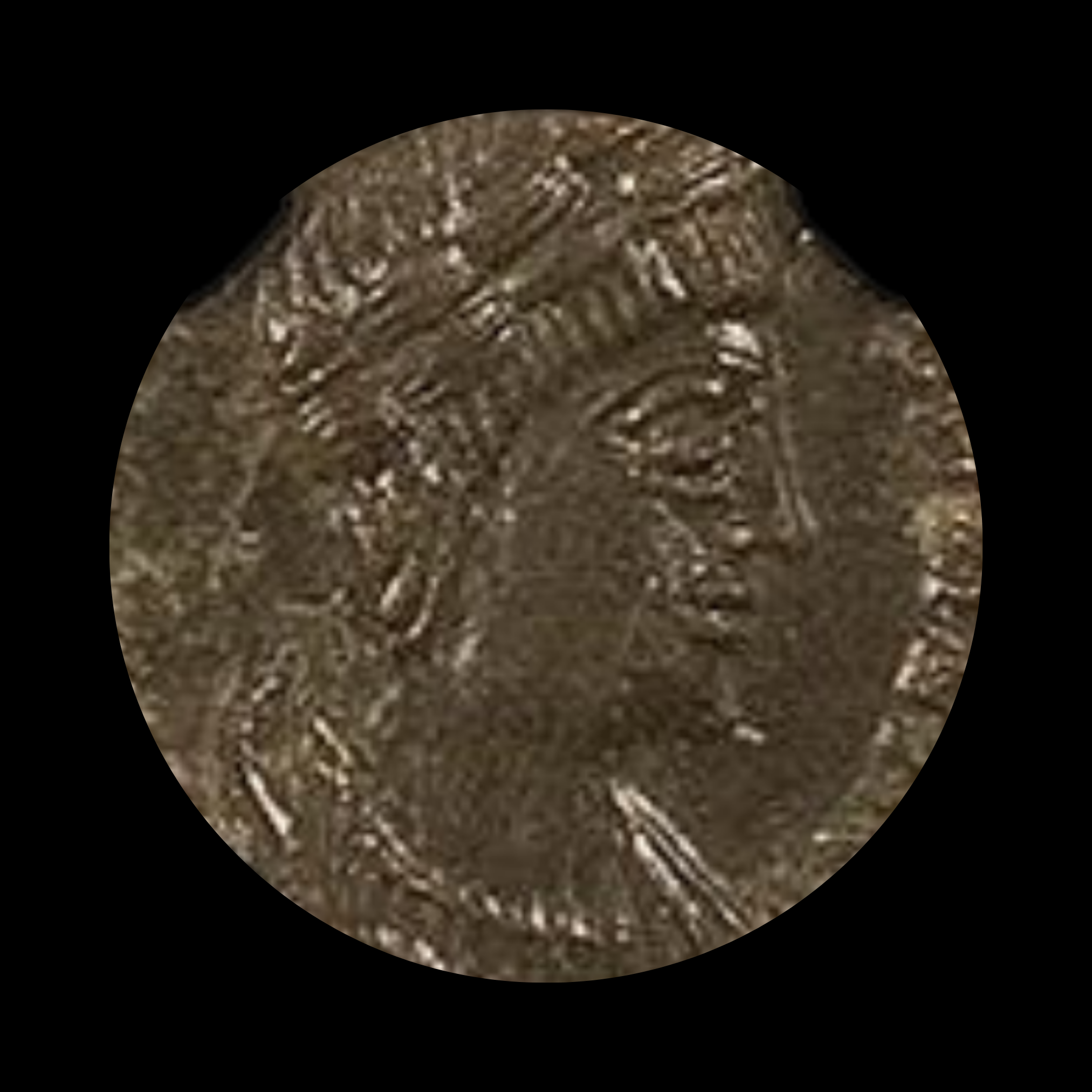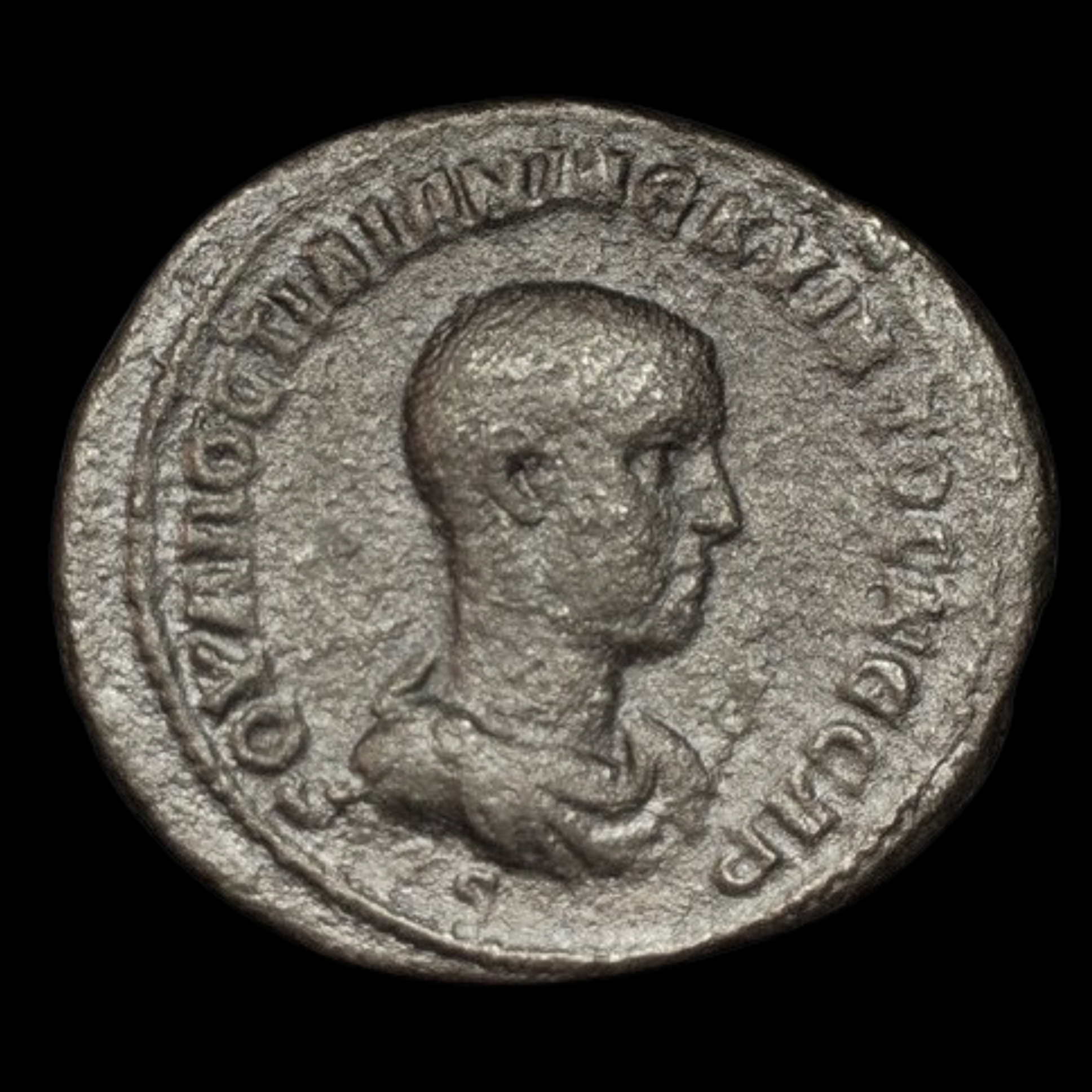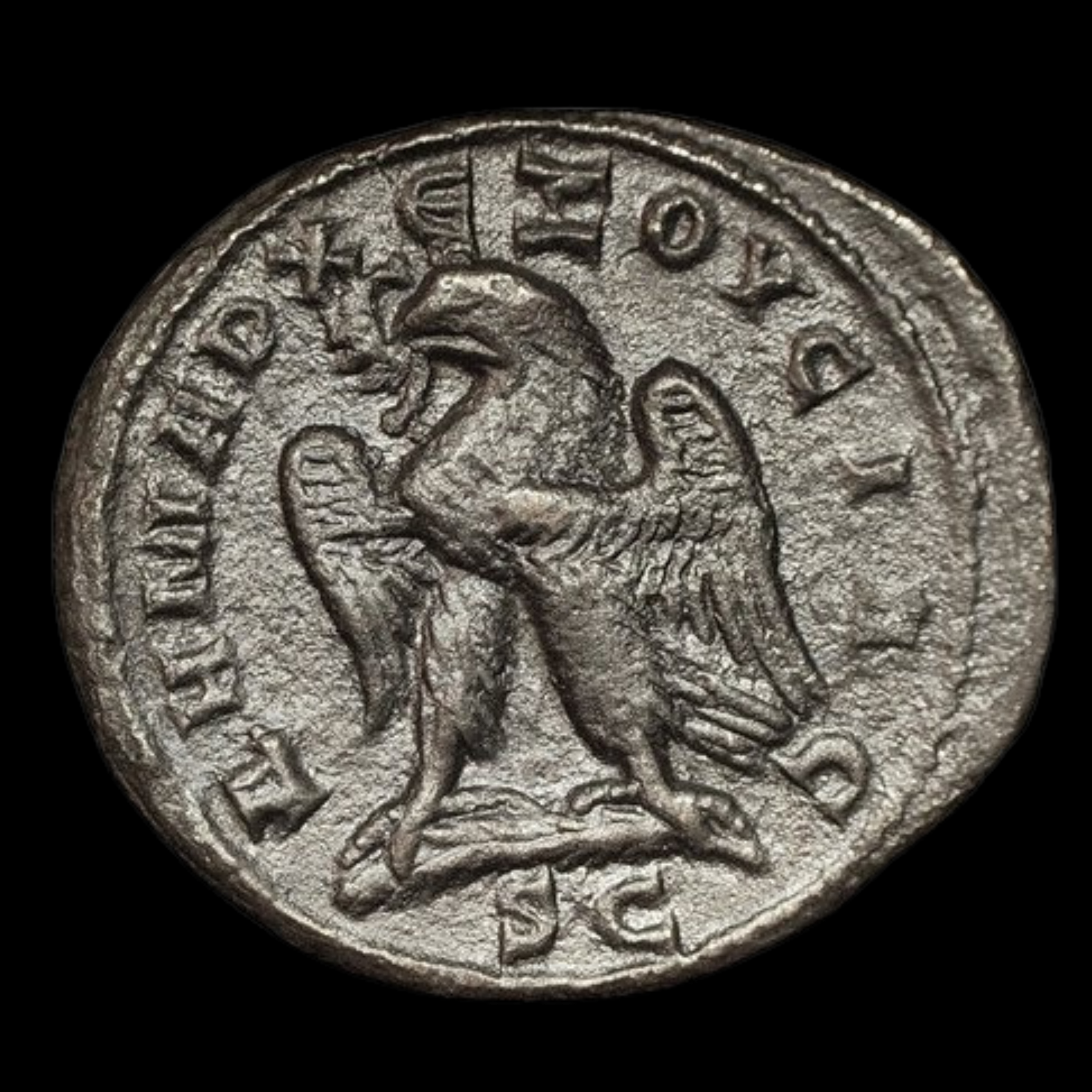 Image 1 of 6
Image 1 of 6

 Image 2 of 6
Image 2 of 6

 Image 3 of 6
Image 3 of 6

 Image 4 of 6
Image 4 of 6

 Image 5 of 6
Image 5 of 6

 Image 6 of 6
Image 6 of 6







Roman Bronze Coin of Flavia Maximiana Theodora (about 1,720-1,730 years ago)
The coins shown are representative examples of the grade and type, but not the actual specimens for sale. For details on NGC’s grading standards and definitions, please refer to our NGC Grading page.
This bronze coin features Flavia Maximiana Theodora, who was the wife (or possibly stepdaughter) of Emperor Constantius I Chlorus during the late 3rd and early 4th centuries CE. As a member of the imperial family during the Tetrarchy period, her coinage represents the growing importance of imperial women in late Roman political imagery.
Coin Description:
Front side: Portrait of Theodora facing right, likely depicted with an elaborate hairstyle common for imperial women, possibly wearing a diadem, with her name and titles in Latin around the edge.
Back side: Probably features personifications of imperial virtues such as Pietas (Piety), Salus (Health/Welfare), or possibly a standing female figure representing peace or prosperity.
Technical Details:
Bronze alloy composition
Denomination: Likely an AE follis or fractional denomination
Weight: Approximately 2-4 grams
Diameter: Approximately 18-22 mm
NGC Certified for authentication and preservation
Minted likely between 306-337 CE (posthumous issues after Constantius I's death)
Condition as specified by NGC certification
Historical Significance: Theodora's historical importance lies in her connection to the Constantinian dynasty as wife to Constantius I Chlorus (who served as Caesar and later Augustus in the Tetrarchic system). She was mother to several children including Constantius II, establishing a dynastic line that would dominate Roman politics for decades. Her coins were likely issued posthumously to emphasize dynastic legitimacy during Constantine the Great's reign. This coin represents the increasing visibility of imperial women on Roman coinage, reflecting their growing political influence during the late empire as guarantors of dynastic continuity.
The coins shown are representative examples of the grade and type, but not the actual specimens for sale. For details on NGC’s grading standards and definitions, please refer to our NGC Grading page.
This bronze coin features Flavia Maximiana Theodora, who was the wife (or possibly stepdaughter) of Emperor Constantius I Chlorus during the late 3rd and early 4th centuries CE. As a member of the imperial family during the Tetrarchy period, her coinage represents the growing importance of imperial women in late Roman political imagery.
Coin Description:
Front side: Portrait of Theodora facing right, likely depicted with an elaborate hairstyle common for imperial women, possibly wearing a diadem, with her name and titles in Latin around the edge.
Back side: Probably features personifications of imperial virtues such as Pietas (Piety), Salus (Health/Welfare), or possibly a standing female figure representing peace or prosperity.
Technical Details:
Bronze alloy composition
Denomination: Likely an AE follis or fractional denomination
Weight: Approximately 2-4 grams
Diameter: Approximately 18-22 mm
NGC Certified for authentication and preservation
Minted likely between 306-337 CE (posthumous issues after Constantius I's death)
Condition as specified by NGC certification
Historical Significance: Theodora's historical importance lies in her connection to the Constantinian dynasty as wife to Constantius I Chlorus (who served as Caesar and later Augustus in the Tetrarchic system). She was mother to several children including Constantius II, establishing a dynastic line that would dominate Roman politics for decades. Her coins were likely issued posthumously to emphasize dynastic legitimacy during Constantine the Great's reign. This coin represents the increasing visibility of imperial women on Roman coinage, reflecting their growing political influence during the late empire as guarantors of dynastic continuity.




























